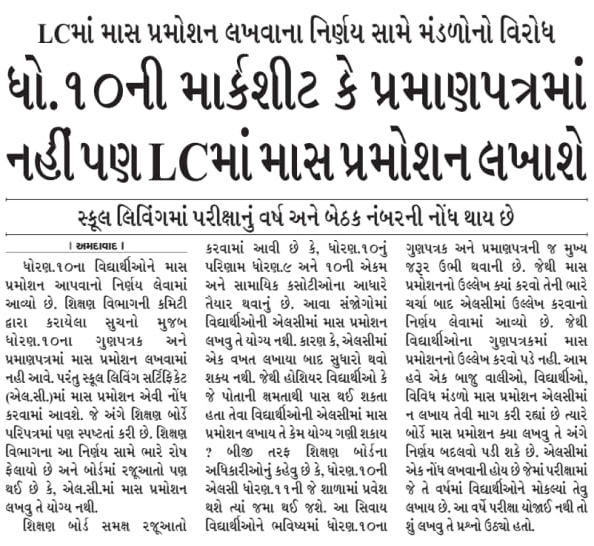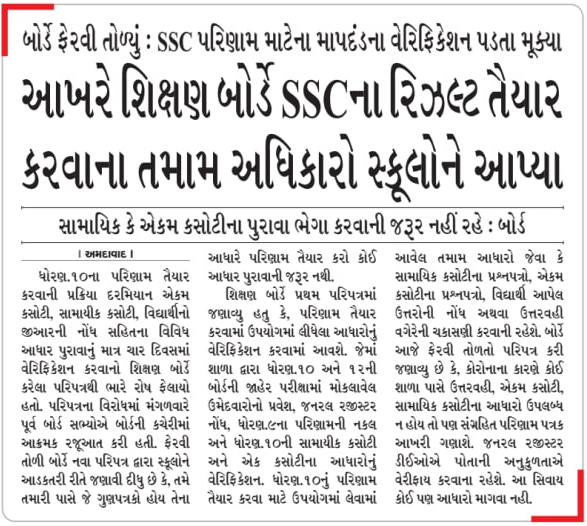GSEB SSC Marks Related Breaking News By Education Department.
At the same time that President Joe Biden was unveiling his plans this month to attack epidemic gun violence with all the tangential minimalism that U.S. law and politics can muster, I was 20 miles north of the U.S.-Canadian border watching what happens when people, and a nation, treat guns as if they might be dangerous.
In a small, carpeted classroom in Delta, British Columbia, a dozen of us filed in for the first of two days of classes — 15 hours in all — required to obtain a firearm license. Canadian law recognizes three basic types of guns: non-restricted, restricted, and prohibited. Firearms become more difficult to possess as the government’s assessment of their danger increases. Handguns, for example, are restricted. Despite their designations, even restricted and prohibited firearms can be legally possessed and acquired.
Licensing is extensive and mandatory. Without a license issued by the Royal Canadian Mounted Police, you can’t legally possess or purchase a firearm in Canada. And without completing an authorized training course in firearm safety like this one, and then waiting a minimum of 28 business days for your application to be processed, you won’t get a license.
At the head of today’s class is Brock Edwards, a self-described “gun nut from Alberta.” A middle-aged White man with glasses, a greying goatee, and a belly he uses as a prop, Edwards might actually look the part. Over the course of the morning, he demonstrates how to load, unload and discharge a range of firearms, from muzzle-loaded antiques to semi-automatics. All the pistols and rifles arrayed before him have been de-activated, and the ammunition is inert. The guns here click, but they don’t shoot. For live-fire training, you need to take a different course.
Edwards, who has been teaching gun safety for seven years, works for Silvercore, Canada’s largest firearms training company. A competitive shooter, he has the ease and command of an expert. Guns snap and crackle, whip-like, at his direction. He is as giddy about his wares as the most enthusiastic gun salesman.
Edwards tells the class that they can make as many as 20 “little mistakes” and he will still sign their applications tomorrow, allowing them to move to the next stage in the gun license process. But he also tells them something else: “If you’re terrible at life, I won’t sign your paperwork. Not everyone can do everything. For some people, guns are that thing. Not everyone can do guns. If it were up to me there would be fewer gun owners in Canada.”
The idea is that perhaps not everyone who wants a gun, especially those who want one right now, should get one. This is a novel and repugnant notion to many Americans. Compared with just about anywhere but the U.S., Canada has a lot of guns — an estimated 35 per 100 residents. But in Canada gun policies are based in part on the realities of human behavior, and how they might influence the trajectory of a bullet into a body. For example, some people are mentally unbalanced or prone to steep depressions. Others are nasty drunks or binge drinkers. Still, others are reckless, impulsive, and easily enraged. If such people are Canadians, they are less likely to get hold of a gun than if they are Americans.
Mike Glas, a retired RCMP staff sergeant who does firearms training at a different company, told me that on occasion he has acted to derail a Possession and Acquisition License application — sometimes before it ever reaches the government. “It’s not that I get an inkling they’re going to do criminal activity,” he said. But he sometimes asks himself, “Would I want them hunting with me?” He once had a chat with a student in a course in British Columbia, Glas said, and afterward “he agreed to have us give his money back.”
As of 2019, there were 2,219,344 firearm license holders in Canada. In the U.S., which has almost 10 times the population of Canada, roughly 4 in 10 adults live in a house with a gun. While that’s a smaller percentage than during the mid-20th century, U.S. gun sales have repeatedly broken records in recent years.
Canada’s four-page firearm application is designed to root out those who might be a risk to others or themselves: “During the past two (2) years have you experienced a divorce, a separation, a breakdown of a significant relationship, job loss or bankruptcy?” The application requires the name and birthdate of your conjugal partner, and it requires the name, birthdate, and contact information of your former conjugal partner as well. It includes a line for your partner to sign the application, and another line for your former partner or ex-spouse to sign. If your ex-spouse doesn’t want to sign, or if you don’t want to ask her to, you can leave it blank, in which case they will be notified of your application.
Above both signature lines for current and former partners, there is an 800 number listed, in bold text, to call “if you have any safety concerns about this application.” Those who know you best can call to register their thoughts on your fitness to possess a firearm. So can anyone else.
“Under the Firearms Act,” said Corporal Caroline Duval, a spokeswoman for the RCMP, via email, “Chief Firearms Officers (CFO) have the authority to issue or revoke a firearms license, or to refuse an application for a license based on their assessment of an individual’s risk to themselves or others.”
Canada began requiring registration of all handguns in 1934, but much of the current regulatory regime dates to the 1970s and ’90s. New regulations were passed in the wake of a 1989 massacre in Montreal, where 14 people died at the Ecole Polytechnique. In addition to restricting certain types of firearms, requiring training and a waiting period, Canada also banned large-capacity magazines.
“Often Americans look at Canada and say, ‘Oh, it’s so strict there,’” said Wendy Cukier, a business professor at Ryerson University in Toronto and president of the Coalition for Gun Control. “What is really important for Americans to understand is that Canada’s kind of middle of the pack compared to the rest of the world.”
Prime Minister Justin Trudeau proposed further restrictions after an April 2020 massacre in Nova Scotia; his plan, which is still in flux one year later, would allow local governments to ban handguns and proposes a government buyback program for the kind of semi-automatic rifles that Americans often call “assault weapons.” The buyback promises to be costly, complicated, and, most likely, far from comprehensive. An Ipsos poll taken one month after the Nova Scotia massacre, which was the worst in Canadian history, found 8 in 10 Canadians in favor of banning weapons. A poll taken in late March found two-thirds of Canadians support stricter gun regulations.
Support for current and proposed gun regulations is not universal, of course. Canada has a gun lobby, though it’s puny compared with the U.S. version. And it has gun-friendly conservatives. Andrew Scheer, the Conservative Party leader at the time Trudeau made his proposal, responded in a way that Americans might find familiar: He accused Trudeau of exploiting a tragedy. “Taking firearms away from law-abiding citizens does nothing to stop dangerous criminals who obtain their guns illegally,” Scheer said in a statement.
Canada, with a population of 37 million, had 249 homicides by firearm in 2018. The U.S., with a population of 327 million, had 13,958. Louisiana alone, with a population of 4.7 million, had 497. That is, with about one-eighth of Canada’s population, Louisiana, which has some of the laxest gun laws in the U.S., managed to double Canada’s firearm homicides.
Gun violence, like all violence, is complicated. As in the U.S., suicides far outnumber homicides in Canada. But, contrary to Scheer’s statement, fewer guns in the hands of fewer citizens, with more restrictions on what they can do with them, do seem to correlate to fewer guns firing fewer bullets into fewer people.
Not including me, there are nine men and two women in firearm safety class. Edwards asks the students to introduce themselves and state why they are there. One man’s father has been prodding him to hunt for the past couple of years. Another has friends who hunt and shoot. One woman works in Vancouver’s thriving film and television industry and wants to be able to handle guns properly on a set.
Toby Farrell is there for work, too. Unhappy practicing law, he is leaving his affluent Kitsilano neighborhood in Vancouver and moving north to start work in June as a wildlife monitor. He will need to carry a gun; bears are plentiful. Joanne Brandon is a former Vancouver police officer. She is working as a public guardian and trustee now and may have to remove firearms from homes or transport them. She needs a license to do that.


In describing why they are attending a gun-safety training, not one person says the phrase that permeates American gun talk: “self-defense.” While the other students are handling the guns, figuring out how they work, I ask Edwards if students in other classes express interest in self-defense. “It’s very, very rare,” he tells me. “That’s not a lawful reason to get a gun.”
In Canada, there is both less armed self-defense and less armed offense. The question is whether the former is partly responsible for the latter. In the U.S. states with lax gun laws tend to have high rates of firearm homicide and vice versa. What Canadian society does in addition to government regulation, however — and what may be as significant — is treat guns like serious instruments of violence instead of as toys or symbolic expressions of manhood.
You want a gun? Then you will have to undergo training to learn to handle it safely. And the government will want some references to feel confident that it’s not arming a time-bomb. Oh, and you’ll have to wait for both of those processes to be completed. Then you’ll have to abide by rules on storage and transportation and apply to renew your license every five years.
ધો. 10ના માર્કસ મુદ્દે મોટા સમાચાર વાંચવા અહી ક્લિક કરો
Leave a Reply